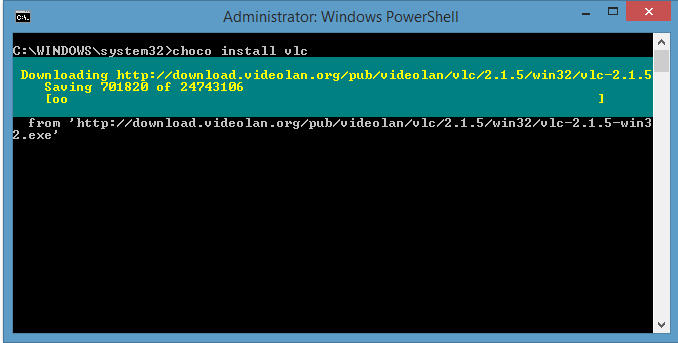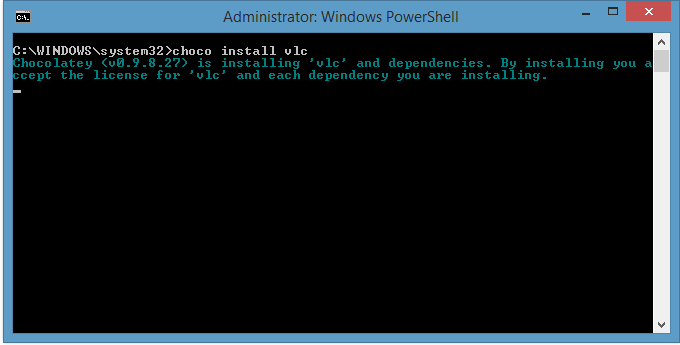

You can (and should) totally get it from the Windows Store, but let's get it using Package Management. You've got a new Windows 10 machine and you want to get VLC. Installing VLC using OneGet and Chocolatey on Windows 10Įxample time. Just like "Chromium" is the open source browser and "Chrome" is the Google packaged instance of that project, "OneGet" is the open source project and what ships with Windows 10 is just generically "PackageManagement." Just a good reminder of the relationship between open source projects and their shipping counterparts. Plus, OneGet isn't done and it's open source so there's lots of cool possibilities. Other things worth noting, even though OneGet is in the box for Windows 10, you can still run it on Windows 7 and Windows 2008 R2. But there is a beta/preview Chocolatey provider that plugs into OneGet so you can use OneGet to get Chocolatey packages and install them. OneGet isn't Microsoft's version of Chocolately.

OneGet isn't Microsoft's ChocolatelyĬhocolatey is an open source apt-get-like machine-wide package manager that you can use today, even if you don't have Windows 10. Since it's PowerShell, you can sort and filter and what-not to your heart's delight. You can type "Get-Package" and see the programs AND packages on your machine: C:\> Get-Package Usually programs are installed with things like MSIs, for example, so there's a provider for that. Go out to you Windows 10 PowerShell prompt now and type "Get-PackageProvider" and you'll see the package managers you have registered with OneGet today. But OneGet isn't actually a package manager. It's easy (and wrong) to just say that One-Get is Apt-Get for Windows. You can read about OneGet architecture here. One of the little gems in Windows 10 that no one is talking about (yet) is OneGet.

Now it's 2015 and many of us are upgrading to Windows 10. In 2013 I asked the questions " Is the Windows user ready for apt-get?" As with nearly all my blog posts, the comments are better than the post itself.


 0 kommentar(er)
0 kommentar(er)
